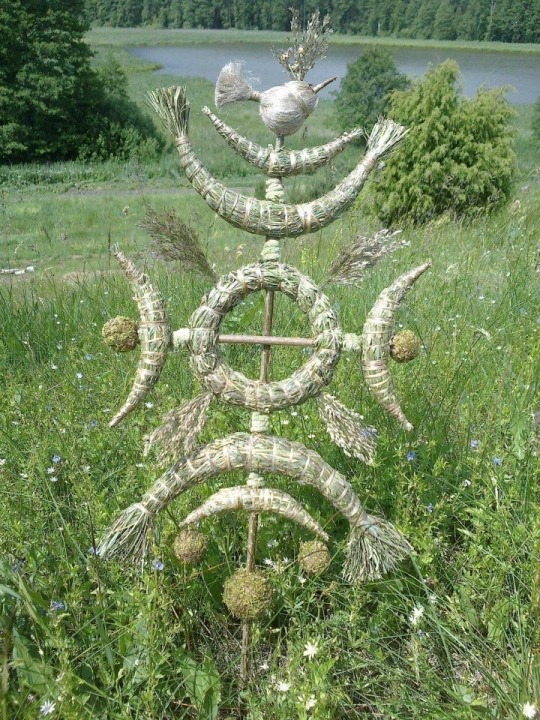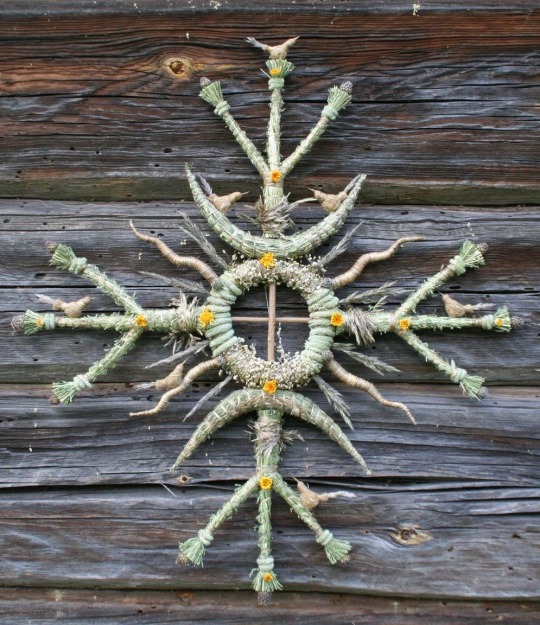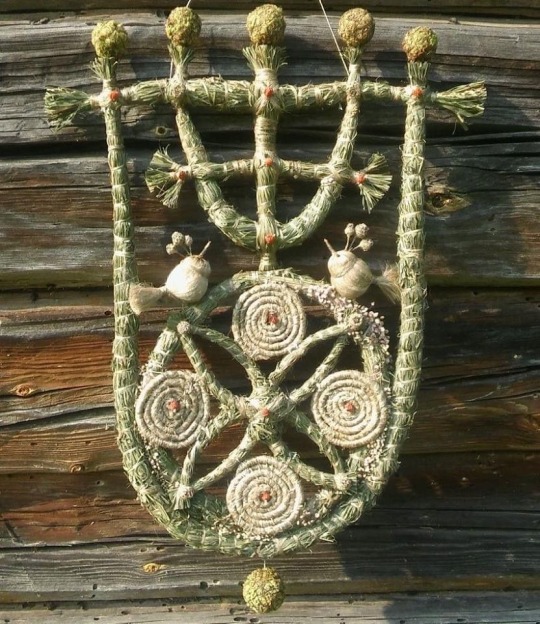Nordic rune reader : Part Shaman : Part Water Witch: Qualified Herbalist : we/us: Pm for a free reading or just a chat, we will always help if I can
Don't wanna be here? Send us removal request.
Text
Amazing meditation on the white sands of Iona. One of the original spritual homes of pagan religion in the uk.
1 note
·
View note
Text
Is your practice Anglo-Saxon?
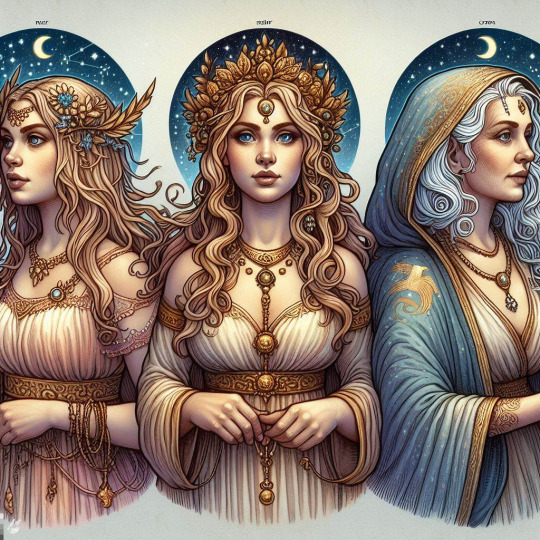
Have you heard of any of these terms ?
Maiden, Mother and crone
Triple Goddess
Three Mother Goddess
The Mothers
Mabon
Many of us have the triple goddess as cornerstone of our practice but do you know what you are actually worshiping?
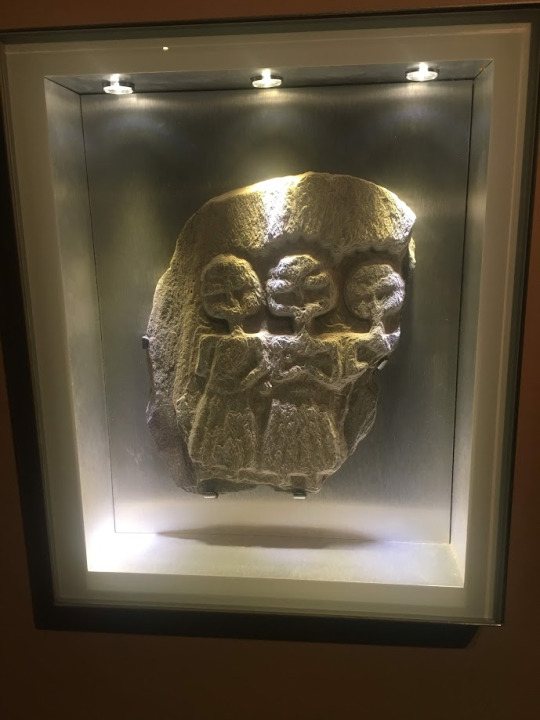
This is one of the earliest representations I have found of the mothers from Bath Spa in England, where pagan traditions from across Europe came together. Although not clear it is the standard three representations, Maiden, Mother and Crone.
The Mothers: The Benevolent Spirits of the Anglo-Saxon Peoples
The Anglo-Saxon peoples, inhabited England from the fifth to the eleventh centuries and had a rich and complex religious system. One of the most intriguing aspects of their beliefs was the concept of the Mothers, the benevolent spirits who protected and nurtured the land and its inhabitants.
The Mothers were female deities associated with fertility, abundance, and prosperity. They were often depicted as matronly women, sometimes holding children or fruits in their arms. They were worshipped in various ways, such as by offering them food, drink, or coins, or by carving their images on stones, altars, or buildings.
The Mothers were not a single entity, but rather a collective term for a variety of local or regional spirits who had different names and attributes. Some of the most well-known Mothers were the Matres, the Matronae, and the Modron.
The Matres and the Matronae were usually depicted in groups of three, representing the three aspects of the female life cycle: maiden, mother, and crone. They were especially popular among the continental Germanic tribes, who brought their practices to Britain during the Anglo-Saxon migrations. It's worth noting however that each tribe had slight different beliefs, stories and rituals.
The Modron was a Celtic goddess who was identified with the Welsh Rhiannon and the Irish Macha. She was the mother of Mabon, the divine son who was kidnapped and rescued by King Arthur and his knights. The same Welsh Mabon celebrated these days at the Autumn equinox.
The Mothers were not only revered by the common people, but also by the kings and nobles, who sought their favor and protection. Some of the most famous Anglo-Saxon kings, such as Alfred the Great and Athelstan, claimed to be descended from the Mothers, thus legitimizing their authority and prestige. The Mothers were also invoked in times of war, as they were believed to grant victory and peace to their devotees.
The Mothers were not completely replaced by Christianity, but rather adapted and assimilated into the new faith. Some of the Mothers were identified with Christian saints, such as Mary, the mother of Jesus, or Anne, the mother of Mary. Others were regarded as guardian angels or holy ancestors, who continued to watch over and bless their descendants. The Mothers were also incorporated into the folklore and customs of the Anglo-Saxon peoples, who celebrated their presence and power in festivals, songs, and stories.
The Mothers were an integral part of the Anglo-Saxon worldview, as they embodied the values and ideals of their culture. They were the sources of life, abundance, and joy, who cared for and sustained the land and its people. They were the symbols of the bond between the human and the divine, the natural and the supernatural, the past and the present. They were the Mothers, the benevolent spirits of the Anglo-Saxon peoples.
Yule Calibration
Did you know the Mothers had their own day of celebration as part of Yule (ġēola or ġēoli in Anglo-saxon). On the first day of Yule, The day before that Winter Solstice. people honoured the Mothers, the goddesses who watched over the family and the land. They offered them food and drink on Mother’s Night, and asked for their blessings for the coming year.
For more ideas click here for my Masterpost
41 notes
·
View notes
Text
Credit : Seren
13 notes
·
View notes
Text
How To Properly Disassemble A Spell Jar


Retrieving the Reusable Ingredients and Getting Rid of the Rest
Reusable ingredients include crystals, shells, rocks, bones, and anything else that can be used again. Cleanse them in smoke or water and reuse them in your next jar.
Trash
Throw the contents into the trash or a dumpster, if you don’t want it near you.
Burying:
This is a more respectful way to dispose of materials, as long as it's safe to do so. Dig a hole at least half a foot, place the herbs that were used in the jar inside, and bury it in the ground. Make sure it's biodegradable and safe for animals before doing this!
Burning It:
Put the offering in a fire safe container (a pot, cauldron, etc) and safely light it. Make sure it's completely burned (don't let it out of your sight until the fire's out!) and then spread the ashes on the ground away from your house.
Releasing:
Release the materials into a body of water. Keep in mind that not all organic matters are safe for the water or for fish, so look it up beforehand
tip jar
815 notes
·
View notes
Text
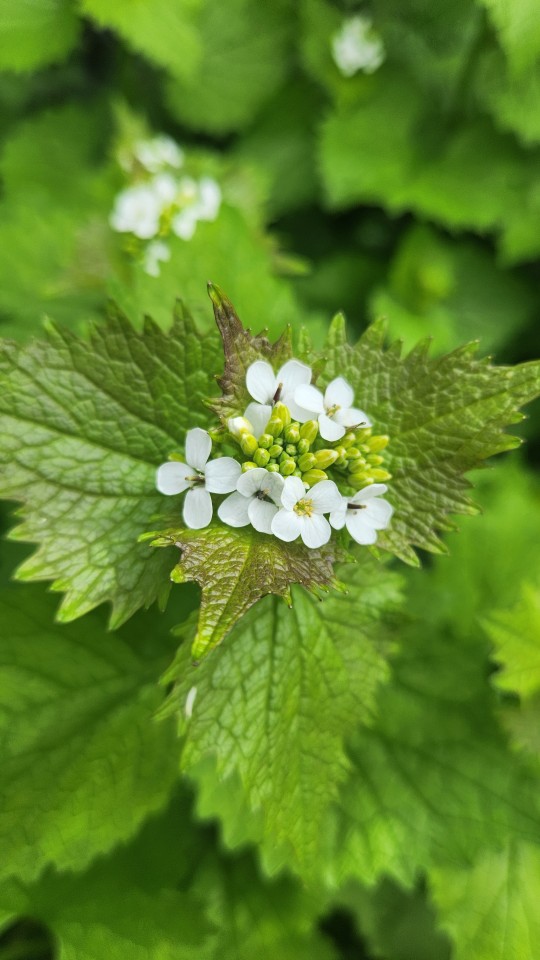
Garlic Mustard
Also known as : Jack-by-the-hedge
Scientific Name : Alliaria petiolata
Identification : Growing to 1.2m high, with erect stems and small white flowers. Lower leaves are heart-shaped.
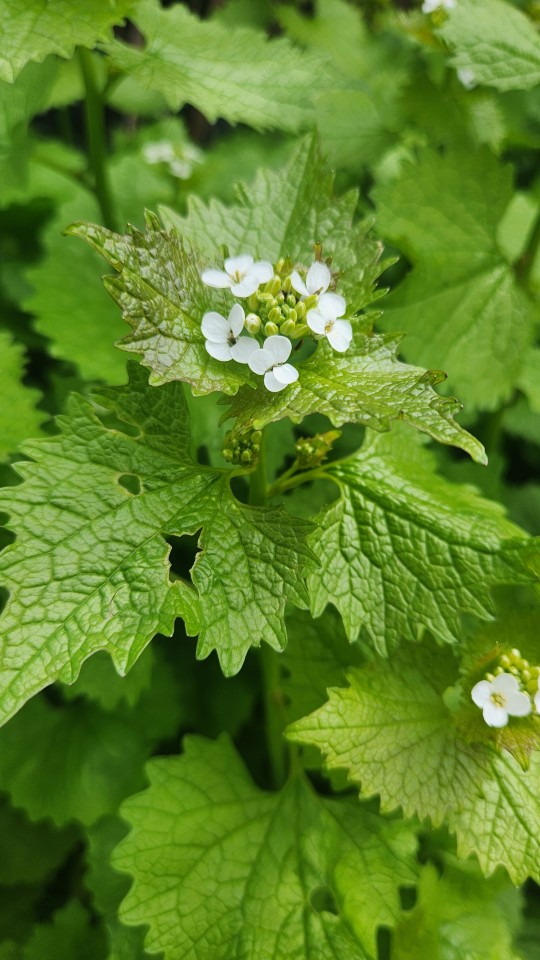
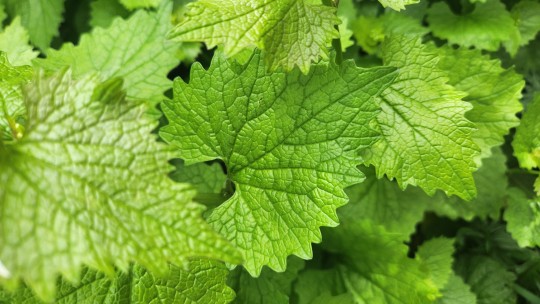
Properties : Anti-inflammatory, anti-asthmatic antiseptic
Uses : Best used as a poultice to relieve rheumatism and gout. Culinary, young leave taste like a mild mix between Garlic and mustard so goes great in salads.
Try It : Dried leaves can be added to herbal teas to add an anti-inflammatory action.
Warnings : None
Parts used: The Leaves and Stems
Magic : Protection. Balance(Harmony)
Planet : Sun & Moon (Balance)
Element : Water & Fire
Deities : None Known
Folklore and History: To protect the home from evil spirits, evil spells and negative energy it would be hung in the house. The dual nature of the plant saw it associated with balance, especially as it appears in the spring.
Plant Tips : The plant loves the side of hedge rows hence its other name. Slightly sheltered position works best. The seeds form in a large pod.
For Refences and bibliography please Click here
Click here to return to the index.
10 notes
·
View notes
Text

Garlic Mustard
Also known as : Jack-by-the-hedge
Scientific Name : Alliaria petiolata
Identification : Growing to 1.2m high, with erect stems and small white flowers. Lower leaves are heart-shaped.


Properties : Anti-inflammatory, anti-asthmatic antiseptic
Uses : Best used as a poultice to relieve rheumatism and gout. Culinary, young leave taste like a mild mix between Garlic and mustard so goes great in salads.
Try It : Dried leaves can be added to herbal teas to add an anti-inflammatory action.
Warnings : None
Parts used: The Leaves and Stems
Magic : Protection. Balance(Harmony)
Planet : Sun & Moon (Balance)
Element : Water & Fire
Deities : None Known
Folklore and History: To protect the home from evil spirits, evil spells and negative energy it would be hung in the house. The dual nature of the plant saw it associated with balance, especially as it appears in the spring.
Plant Tips : The plant loves the side of hedge rows hence its other name. Slightly sheltered position works best. The seeds form in a large pod.
For Refences and bibliography please Click here
Click here to return to the index.
10 notes
·
View notes
Text
Casual ways to connect with your deities
-Pray to them or just just talk with them and tell them about your day
-Light a candle and say your thanks
-Offer your meal/snack to them or bake/cook with them or for them
-Watch a movie in their honor
-Offer your morning drink to them or make a cup for them
-Assign them a plant and take care of it as a devotion to them
-Listen to music that reminds you of them
-Say good morning/good night
-Thank them for the things you see that you consider beautiful
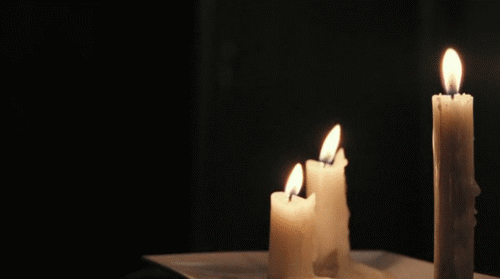
7K notes
·
View notes
Text
15 Grimoire Page Ideas That Aren't Basic
Chronomancy Correspondences:
Explore the connection between time and magic, including auspicious moments for spellcasting, planetary hours, and lunar phases.
Echoes of Enchantment:
Discuss the use of echoes and resonance in magical workings, tapping into the vibrational frequencies of words, symbols, and intentions.
Liminal Spaces Invocation:
Explore the magical potency of liminal spaces—thresholds, crossroads, and in-between places—and how to invoke their energies.
Numinous Nectar Elixirs:
Detail the creation of magical elixirs using rare and ethereal substances, discussing their uses in rituals and ceremonies.
Quantum Sigilcraft:
Delve into the intersection of quantum physics and sigil magic, exploring the idea that consciousness can influence reality at a fundamental level.
Astral Alphabets:
Introduce lesser-known alphabets or symbolic systems used in astral travel and communication with otherworldly entities.
Dreamweaving Spells:
Discuss the art of crafting spells that are specifically designed to be cast within the dream realm, influencing waking reality.
Candle Color Alchemy:
Explore the magical properties of less common candle colors and their associations with specific intentions, emotions, and energies.
Chthonic Charms:
Focus on charms and talismans specifically attuned to underworld energies and deities, connecting with the mysteries of the subterranean realms.
Technomancy Scripts:
Examine the use of coding languages, digital symbols, and technology-based sigils in modern magical practice.
Quantum Familiars:
Explore the idea of spirit companions that exist beyond the constraints of time and space, bridging the gap between the metaphysical and quantum realms.
Sacred Geometry of Sound:
Investigate the use of sound frequencies and sacred geometry in combination, exploring how they can enhance magical rituals and spellcasting.
Ephemeral Elementals:
Discuss the existence and interaction with elementals that are tied to fleeting or ephemeral elements, such as mist, shadows, or reflections.
Psychotronic Crystals:
Explore the use of crystals not only for their physical properties but also for their alleged ability to interact with psychic and spiritual energies.
Aetheric Anatomy Cleansing:
Detail practices for cleansing and balancing the aetheric body, exploring lesser-known energy centers and channels.

3K notes
·
View notes
Text

Jumping the broom
From West Africa and Wales, under pagan traditions, a broomstick was used to conduct a wedding ceremony.
In Ghana, a broom was waved over the heads of the bridal party, before being placed on the floor. The couple would then jump over the broom to marry the couple and bless it with good luck and fertility. The tradition had been fading but came back to life through the African Slave trade. For a period, Slaves were not permitted to marry, so the broom tradition was reintroduced to provide a workaround.
I wonder how many trendy couples that have added a sweet broom jumping tradition to your conventional wedding, realise that it was an African slave tradition reintroduced through necessity.
In the early 1700's in Wales Roma (Gypsy) weddings were not recognised by the church, again they reintroduced their tradition where the bride and groom to step over a broomstick placed across the doorway of their home.
Trip and your marriage was in trouble. If you want to get divorced, simply place the broom back and step out of the home.
15 notes
·
View notes
Text
As mentioned under The Mothers, the symbol had different meanings and is attributed to different deities. This was taken from Bath Spa and through to date to the original monument before the romans embelished it. As Celtic deties it was simply known as the "Three Mothers" rather than the modern MMC badge. The key is that female deities have for nearly 40,000 years been the cornerstone of peoples worship. See the original goddess
Is your practice Anglo-Saxon?

Have you heard of any of these terms ?
Maiden, Mother and crone
Triple Goddess
Three Mother Goddess
The Mothers
Mabon
Many of us have the triple goddess as cornerstone of our practice but do you know what you are actually worshiping?

This is one of the earliest representations I have found of the mothers from Bath Spa in England, where pagan traditions from across Europe came together. Although not clear it is the standard three representations, Maiden, Mother and Crone.
The Mothers: The Benevolent Spirits of the Anglo-Saxon Peoples
The Anglo-Saxon peoples, inhabited England from the fifth to the eleventh centuries and had a rich and complex religious system. One of the most intriguing aspects of their beliefs was the concept of the Mothers, the benevolent spirits who protected and nurtured the land and its inhabitants.
The Mothers were female deities associated with fertility, abundance, and prosperity. They were often depicted as matronly women, sometimes holding children or fruits in their arms. They were worshipped in various ways, such as by offering them food, drink, or coins, or by carving their images on stones, altars, or buildings.
The Mothers were not a single entity, but rather a collective term for a variety of local or regional spirits who had different names and attributes. Some of the most well-known Mothers were the Matres, the Matronae, and the Modron.
The Matres and the Matronae were usually depicted in groups of three, representing the three aspects of the female life cycle: maiden, mother, and crone. They were especially popular among the continental Germanic tribes, who brought their practices to Britain during the Anglo-Saxon migrations. It's worth noting however that each tribe had slight different beliefs, stories and rituals.
The Modron was a Celtic goddess who was identified with the Welsh Rhiannon and the Irish Macha. She was the mother of Mabon, the divine son who was kidnapped and rescued by King Arthur and his knights. The same Welsh Mabon celebrated these days at the Autumn equinox.
The Mothers were not only revered by the common people, but also by the kings and nobles, who sought their favor and protection. Some of the most famous Anglo-Saxon kings, such as Alfred the Great and Athelstan, claimed to be descended from the Mothers, thus legitimizing their authority and prestige. The Mothers were also invoked in times of war, as they were believed to grant victory and peace to their devotees.
The Mothers were not completely replaced by Christianity, but rather adapted and assimilated into the new faith. Some of the Mothers were identified with Christian saints, such as Mary, the mother of Jesus, or Anne, the mother of Mary. Others were regarded as guardian angels or holy ancestors, who continued to watch over and bless their descendants. The Mothers were also incorporated into the folklore and customs of the Anglo-Saxon peoples, who celebrated their presence and power in festivals, songs, and stories.
The Mothers were an integral part of the Anglo-Saxon worldview, as they embodied the values and ideals of their culture. They were the sources of life, abundance, and joy, who cared for and sustained the land and its people. They were the symbols of the bond between the human and the divine, the natural and the supernatural, the past and the present. They were the Mothers, the benevolent spirits of the Anglo-Saxon peoples.
Yule Calibration
Did you know the Mothers had their own day of celebration as part of Yule (ġēola or ġēoli in Anglo-saxon). On the first day of Yule, The day before that Winter Solstice. people honoured the Mothers, the goddesses who watched over the family and the land. They offered them food and drink on Mother’s Night, and asked for their blessings for the coming year.
For more ideas click here for my Masterpost
41 notes
·
View notes
Note
Man, I’d enjoy your posts so much more if you weren’t constantly stealing from artists with AI artwork :/
All artwork not hand drawn is made using Photoshop pro, which is not taught on other peoples art. I own full royalties and nobody is out of pocket. Not all digital art is stolen from others 🫡
2 notes
·
View notes
Text
The 12 days of Yule
Looking to add more meaning to the season?
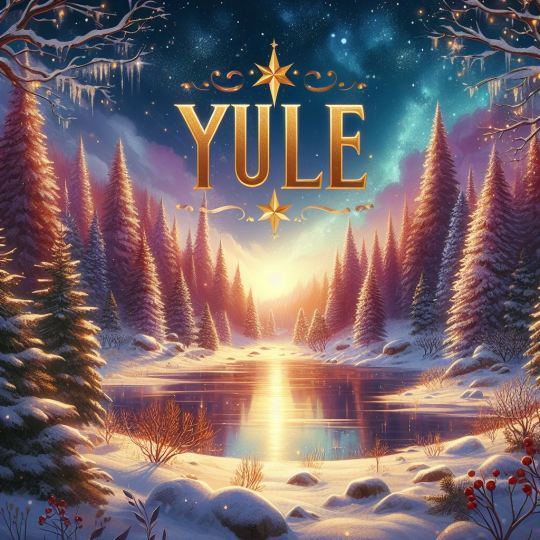
I think it's time we started to look back at our traditions from the past, and brought real meaning to the festivities rather than the commercialised mess that Christmas has become. The season was never about how many presents you got, how much money you could spend. It was about spirituality and family.
Below I run through the 12 days of Yule which started this year on the 21st Dec. I write this on boxing day which is 6th day of Yule if you are trying to find the current day.
When is Yule?
I've seen some confusion on posts of the date, this is natural as the date varies. The celebrations commence the day before the winter solstice, the shortest day of the year. Which does vary slightly from year to year. This year the shortest day is the 22nd, so Yule starts on the 21st.
What were the 12 days of the celebration.
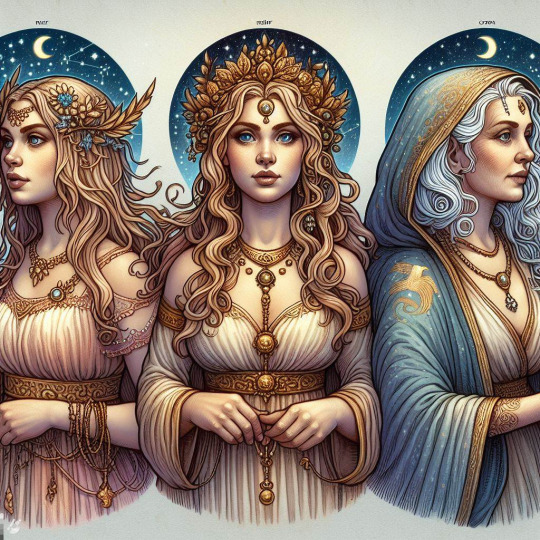
On the first day of Yule, The day before that Winter Solstice. people honoured "The Mothers", the goddesses who watched over the family and the land. They offered them food and drink on Mother’s Night, and asked for their blessings for the coming year. If you don't follow the Mothers in any guise simply substitute for one you do as part of your practice. For more details on the mothers click here
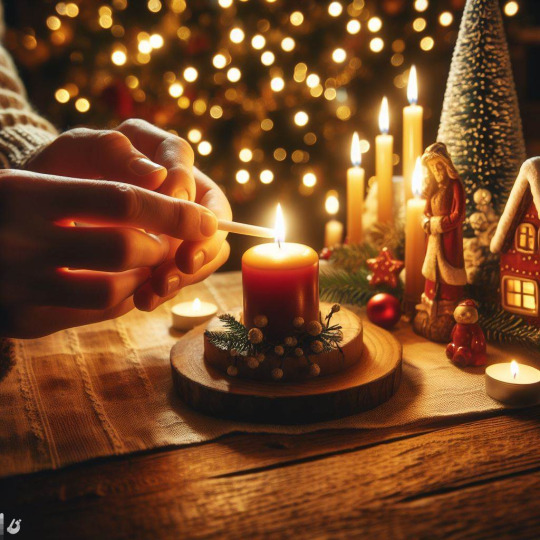
On the second day of Yule, people celebrated the winter solstice, the shortest day and longest night of the year. They lit candles, bonfires, and the Yule log to symbolize the return of the sun and the warmth of life. They also decorated evergreen trees with ornaments and gifts. To those of you who've had your tree up since october, yes decorating the tree was part of the festivities. As not everyone has the ability to burn a giant log so a candle lit to banish the dark is a great modern option.
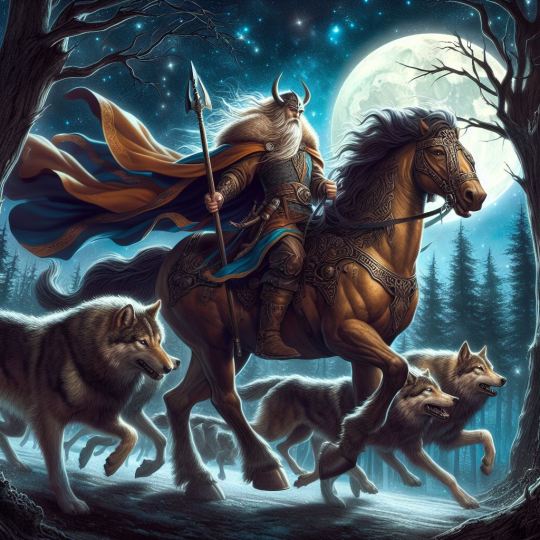
On the third day of Yule, people honoured Odin, the god of wisdom, war, and magic. They left offerings of food and drink for him and his followers, the Wild Hunt, a ghostly procession of spirits and animals that roamed the sky during the winter nights. They also told stories and poems about Odin and his adventures. It was a family day pulling everyone together to spend time telling tales and being close.
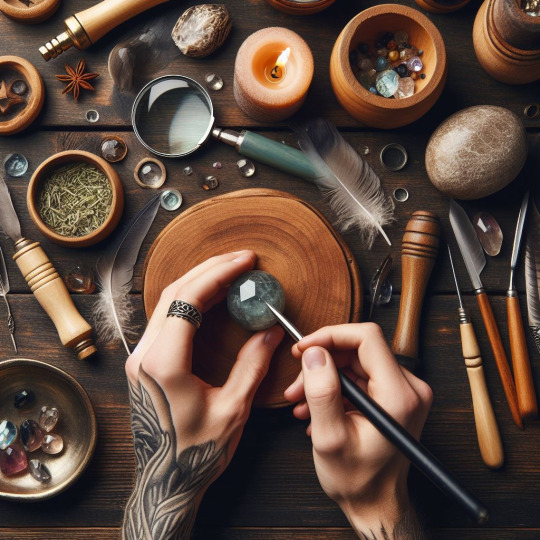
On the fourth day of Yule, people honoured Thor, the god of thunder, strength, and protection. They ate and drank in his name, and thanked him for his blessings. They also carved runes and amulets for protection and luck. If you don't fancy making Thors hammer amulets use this day to make something simple to act as protection for your family. For an easy option why not make my tripple goddess knot, only a length of string in needed, guild click here
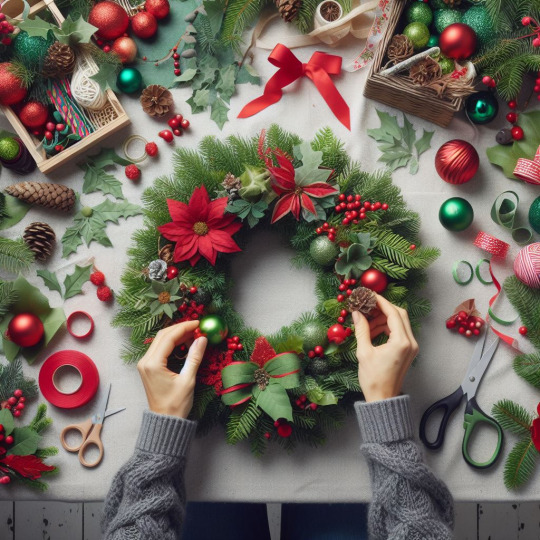
On the fifth day of Yule, people honoured Frey, the god of fertility, prosperity, and peace. They exchanged gifts and tokens of love and friendship, and wished for a fruitful and prosperous year. They also made wreaths and garlands of mistletoe, holly, and ivy, which were sacred to Frey. Again making the Wreath was part of the festivities rather than something that you made in advance.
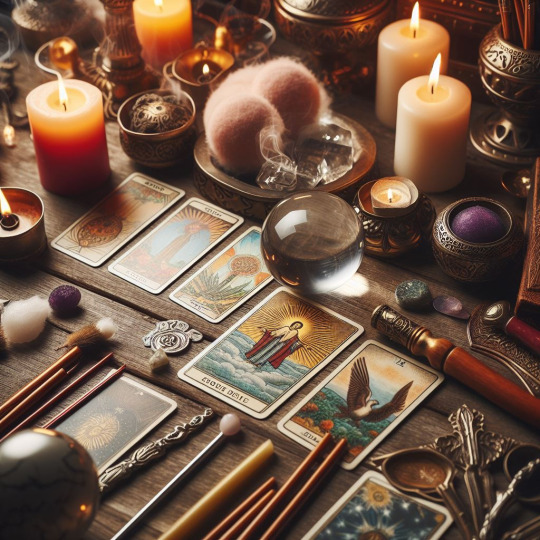
On the sixth day of Yule, people honoured Freya, the goddess of love, beauty, and magic. They celebrated with feasts, music, and dancing, and expressed their joy and gratitude for life. They also practiced divination and seidr, a form of shamanic magic that Freya taught to Odin. So Boxing day (as of 2023) is the day to break out your favourite divination tools and scry the future.
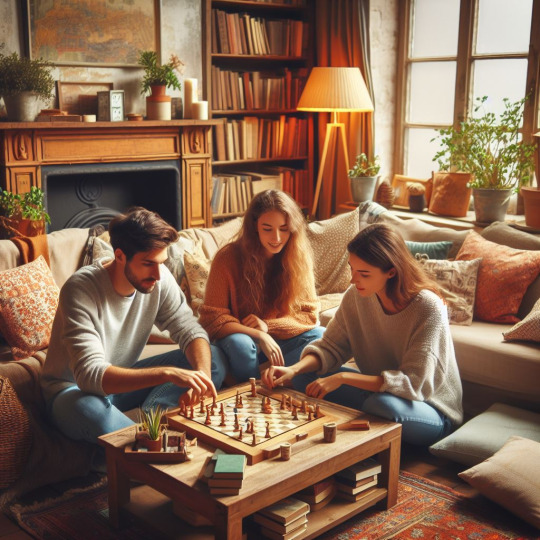
On the seventh day of Yule, people honoured Balder, the god of light, joy, and purity. They remembered his death and resurrection, and hoped for his return in the new world. They also played games and sports, and enjoyed the snow and ice. A great day to break out those new boardgames, invite people over who are getting bored and have a games night.

On the eighth day of Yule, people honoured Skadi, the goddess of winter, hunting, and skiing. They admired her beauty and strength, and respected her independence and justice. They also went hunting and skiing, and enjoyed the cold and the wilderness. Not everyone is going to enjoy a hunt, but getting out in nature to spend some time to appreciate the beauty of the world around us should be our target on this day.

On the ninth day of Yule, people honoured Ullr, the god of archery, skiing, and dueling. They praised his skill and courage, and challenged themselves and others to contests of honor and glory. They also made offerings of skis, bows, and arrows to Ullr. Although Monopoly in our house tends to turn into a blood sport, contents of strength should be slightly more energetic.

On the tenth day of Yule, people honoured Loki, the god of mischief, fire, and change. They laughed at his tricks and pranks, and acknowledged his role in the balance of the world. They also played jokes and riddles, and embraced the chaos and the change. Again draw together with friends or family and have some fun, even if its settling down for a good comedy film.

On the eleventh day of Yule, for the end of the year people honoured the ancestors, the spirits of the dead who lived on in the otherworld. They remembered their names and deeds, and honoured their legacy and wisdom. They also set a place for them at the table, and shared stories and memories with them. We have all lost someone who remains in our hearts. Use this day to remind yourself how they have touched your life. Pull out the old photographs, share their stories with those too young to remember them and keep them alive. Click here for my memory stones for those feeling crafty.

On the twelfth day of Yule, people honoured the Norns, the goddesses of fate who wove the threads of destiny. They reflected on the past, the present, and the future, and made resolutions and plans for the new year. They also burned the remains of the Yule log, and scattered the ashes for good luck. This day normally falls around the new year and the tradition lives on as "New Year Resolutions". Don't aim for the impossible, practical resolutions are far easier to stick to.
For more ideas of things to make or do, click here for my masterpost.
16 notes
·
View notes
Text
Is your practice Anglo-Saxon?

Have you heard of any of these terms ?
Maiden, Mother and crone
Triple Goddess
Three Mother Goddess
The Mothers
Mabon
Many of us have the triple goddess as cornerstone of our practice but do you know what you are actually worshiping?

This is one of the earliest representations I have found of the mothers from Bath Spa in England, where pagan traditions from across Europe came together. Although not clear it is the standard three representations, Maiden, Mother and Crone.
The Mothers: The Benevolent Spirits of the Anglo-Saxon Peoples
The Anglo-Saxon peoples, inhabited England from the fifth to the eleventh centuries and had a rich and complex religious system. One of the most intriguing aspects of their beliefs was the concept of the Mothers, the benevolent spirits who protected and nurtured the land and its inhabitants.
The Mothers were female deities associated with fertility, abundance, and prosperity. They were often depicted as matronly women, sometimes holding children or fruits in their arms. They were worshipped in various ways, such as by offering them food, drink, or coins, or by carving their images on stones, altars, or buildings.
The Mothers were not a single entity, but rather a collective term for a variety of local or regional spirits who had different names and attributes. Some of the most well-known Mothers were the Matres, the Matronae, and the Modron.
The Matres and the Matronae were usually depicted in groups of three, representing the three aspects of the female life cycle: maiden, mother, and crone. They were especially popular among the continental Germanic tribes, who brought their practices to Britain during the Anglo-Saxon migrations. It's worth noting however that each tribe had slight different beliefs, stories and rituals.
The Modron was a Celtic goddess who was identified with the Welsh Rhiannon and the Irish Macha. She was the mother of Mabon, the divine son who was kidnapped and rescued by King Arthur and his knights. The same Welsh Mabon celebrated these days at the Autumn equinox.
The Mothers were not only revered by the common people, but also by the kings and nobles, who sought their favor and protection. Some of the most famous Anglo-Saxon kings, such as Alfred the Great and Athelstan, claimed to be descended from the Mothers, thus legitimizing their authority and prestige. The Mothers were also invoked in times of war, as they were believed to grant victory and peace to their devotees.
The Mothers were not completely replaced by Christianity, but rather adapted and assimilated into the new faith. Some of the Mothers were identified with Christian saints, such as Mary, the mother of Jesus, or Anne, the mother of Mary. Others were regarded as guardian angels or holy ancestors, who continued to watch over and bless their descendants. The Mothers were also incorporated into the folklore and customs of the Anglo-Saxon peoples, who celebrated their presence and power in festivals, songs, and stories.
The Mothers were an integral part of the Anglo-Saxon worldview, as they embodied the values and ideals of their culture. They were the sources of life, abundance, and joy, who cared for and sustained the land and its people. They were the symbols of the bond between the human and the divine, the natural and the supernatural, the past and the present. They were the Mothers, the benevolent spirits of the Anglo-Saxon peoples.
Yule Calibration
Did you know the Mothers had their own day of celebration as part of Yule (ġēola or ġēoli in Anglo-saxon). On the first day of Yule, The day before that Winter Solstice. people honoured the Mothers, the goddesses who watched over the family and the land. They offered them food and drink on Mother’s Night, and asked for their blessings for the coming year.
For more ideas click here for my Masterpost
41 notes
·
View notes

